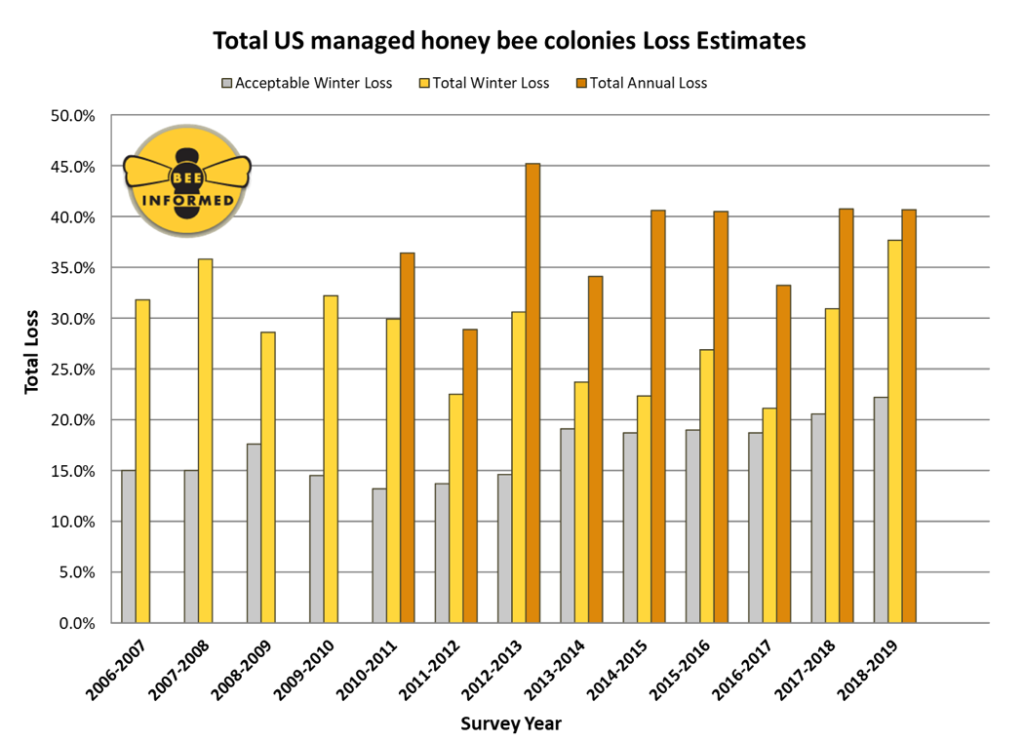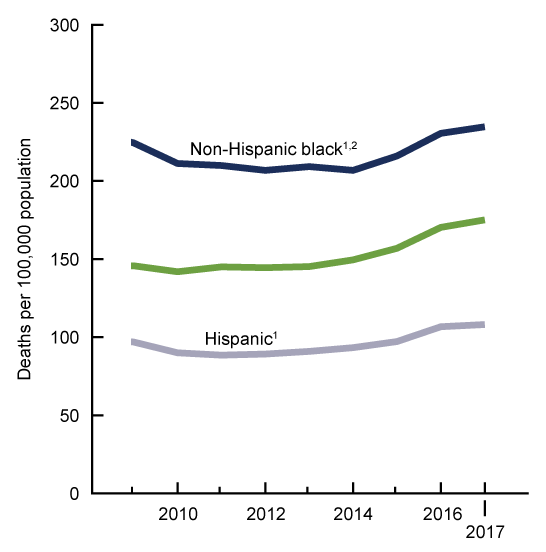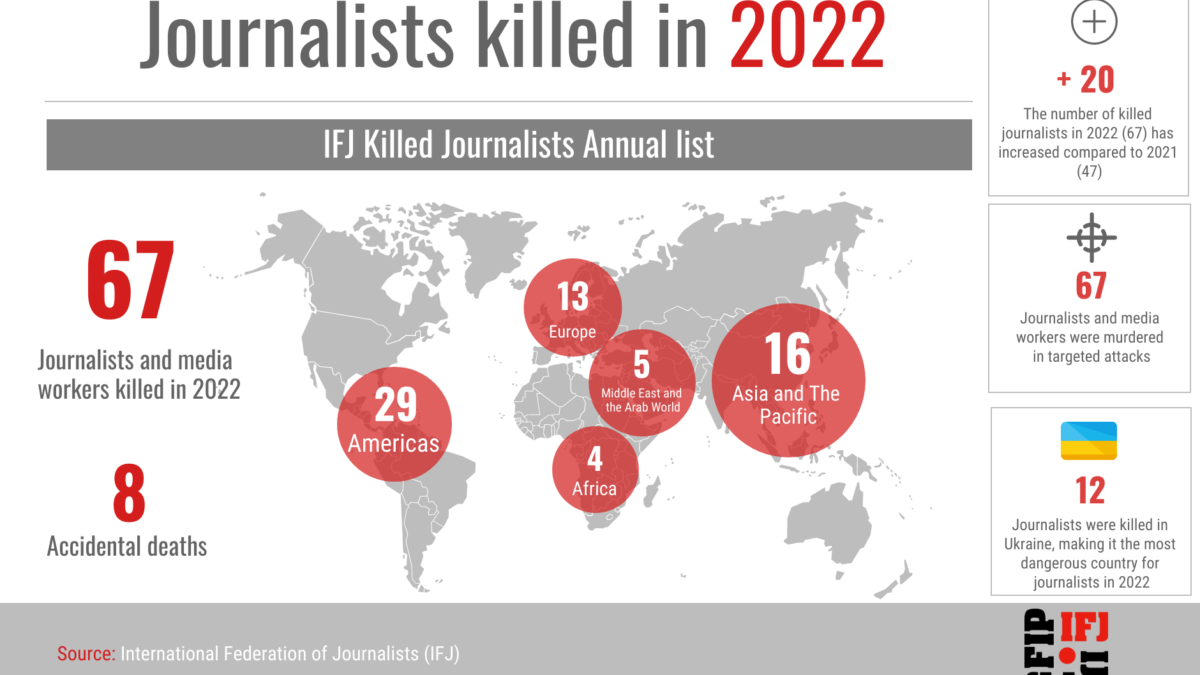Nearly 40 percent decline in honey bee population last winter “unsustainable” – Trump administration cuts funding for bee research
By Julia Jacobo
9 July 2019
(ABC News) – Scientists are researching the potential consequences of the rapid decline of the honey bee population in the U.S. and how to mitigate its effects before it causes dire problems for crop management and production.
Honey bees are essential for the pollination of flowers, fruits and vegetables, and support about $20 billion worth of crop production in the U.S. annually, Matthew Mulica, senior project manager at the Keystone Policy Center, a consulting company that works with the Honey Bee Health Coalition, told ABC News.
Worldwide, honey bees and other pollinators help to produce about $170 billion in crops, Scott McArt, assistant professor of pollinator health at Cornell University, told ABC News.
“Honey bees are one of the most important agricultural commodities in the country,” Geoff Williams, an assistant professor of entomology at Auburn University who also serves on the board of directors for the Bee Informed Partnership, told ABC News.
Between Oct. 1, 2018, and April 1, 2019, 37.7% of the managed honey bee population — colonies kept by commercial beekeepers — declined, 7 percentage points lower than the same time frame during the 2017-2018 winter, according to preliminary data from the Bee Informed Partnership, a nonprofit associated with the University of Maryland.
This is yet another example of the Trump administration systematically undermining federal research on food safety, farm productivity, and the public interest writ large.
Rebecca Boehm, economist with Union of Concerned Scientists
This past winter season represents the highest level of winter losses reported since the survey began in 2006, according to the report.
For the entire year — April 1, 2018, to April 1, 2019 — the managed bee population decreased by 40.7%, according to the report. The overall loss rate is around the average of what researchers and beekeepers have seen since 2006, McArt said.
“The main take-home from this is these are unsustainably high losses,” McArt said, adding that researchers are not necessarily alarmed at the numbers because they’ve become “a little bit accustomed to these large loss rates.” [more]
Nearly 40% decline in honey bee population last winter ‘unsustainable,’ experts say

Honeybees hit by Trump budget cuts
By Sam Fossum
6 July 2019
Washington (CNN) – The US Department of Agriculture has suspended data collection for its annual Honey Bee Colonies report, citing cost cuts — a move that robs researchers and the honeybee industry of a critical tool for understanding honeybee population declines, and comes as the USDA is curtailing other research programs.
It’s also another step toward undoing President Barack Obama’s government-wide focus on protecting pollinators, including bees and butterflies, whose populations have plummeted in recent years.
The annual survey, which started in 2015, gathers data on the number of honeybees per state by quarter, including those being lost with symptoms of colony collapse disorder, an issue that’s made honeybees a darling of environmentalists and climate activists.
It is at least the third bee-related dataset to be suspended under the current administration. […]
Outside groups that have been critical of the administration see the move as another way to undermine federal research.
“This is yet another example of the Trump administration systematically undermining federal research on food safety, farm productivity, and the public interest writ large,” said Rebecca Boehm, an economist at the Union of Concerned Scientists.
The USDA recently announced plans to relocate key research units from Washington, DC, to Kansas City over the objections of employee unions, who say the changes are triggering an exodus of experts from the agency. The move covers bee industry researchers. The union that represents one of the research units says employees must decide by July 15 whether to relocate.
In 2014, the Obama administration launched a program to address honeybee population losses, directing federal agencies to work toward preserving bee and other pollinator populations.
The Trump administration has gone the other way, though Second Lady Karen Pence has advocated for doing more to help honeybees and even keeps a beehive in the vice president’s residence.
Last year, the Trump administration reversed an Obama-era rule barring the use of neonicotinoids, a chemical family that is one of the major culprits in colony collapse disorder, in wildlife refuges. And the Environmental Protection Agency has granted “emergency” permissions to 18 states to spray an insecticide that’s considered “highly toxic” to bees.
Two other surveys have been suspended or scaled back in the last year. The Cost of Pollination survey, which tracked how farmers pay for honeybees to pollinate their crops, was suspended in 2018, and the Honey survey — which gathers information on honey production — has been scaled back to cut data collection on beekeeping operations that have less than five colonies. [more]
Honeybees hit by Trump budget cuts
Honey Bee Colony Losses 2018-2019: Preliminary Results
19 June 2019 (Bee Informed) – The Bee Informed Partnership (BIP; http://beeinformed.org) recently conducted the 13th annual survey of managed honey bee colony losses in the United States. This past year, 4,696 beekeepers collectively managing 319,787 colonies as of October 2018 provided validated colony loss survey responses. The number of colonies managed by surveyed respondents represents 11.9% of the estimated 2.69 million managed honey-producing colonies in the nation (USDA, 2018).
During the 2018-2019 winter (1 October 2018 – 1 April 2019), an estimated 37.7% of managed honey bee colonies in the United States were lost (Fig. 1). This loss represents an increase of 7 percentage points compared to last year (30.7%), and an increase of 8.9 percentage points compared to the 13-year average winter colony loss rate of 28.8%. This year’s estimate is the highest level of winter losses reported since the survey began in 2006-2007.
Similar to previous years, backyard beekeepers lost more colonies over the winter (39.8%) compared to sideline (36.5%) and commercial (37.5%) beekeepers. Backyard, sideline, and commercial beekeepers are defined as those managing 50 or fewer colonies, 51 to 500 colonies, and 501 or more colonies, respectively.
Our survey also asked what level of winter loss would be acceptable by beekeepers. Interestingly, this revealed an increase from 20.6% last year to 22.2% this year, which is much greater than the 11-year average of 17%. This increased acceptable loss may indicate that beekeepers are more realistic or pragmatic in their expectations of colony losses. Even with a higher acceptable loss, sixty-two percent of responding beekeepers lost more colonies than the level deemed acceptable.
During the summer 2018 season (1 April 2018 – 1 October 2018), an estimated 20.5% of managed colonies were lost in the U.S. This level is slightly higher (3.4 percentage points) than the previous summer’s colony loss estimate of 17.1%, but is on par with the summer loss average reported by beekeepers since 2010-2011 (20.5%), when summer losses were first recorded by the BIP.
For the entire survey period (1 April 2018 – 1 April 2019), beekeepers in the U.S. lost an estimated 40.7% of their managed honey bee colonies. This is similar to last year’s annual loss estimate of 40.1%, but slightly higher (2.9 percentage points) than the average annual rate of loss reported by beekeepers since 2010-11 (37.8%).
We note that loss rate for each period was estimated by identifying the total number of at-risk-colonies that died, and that annual loss rate was not estimated by summing the individual summer and winter loss rates. This year’s state-specific loss rates will be added to previous years’ results on the BIP website shortly (https://bip2.beeinformed.org/loss-map/). [more]


